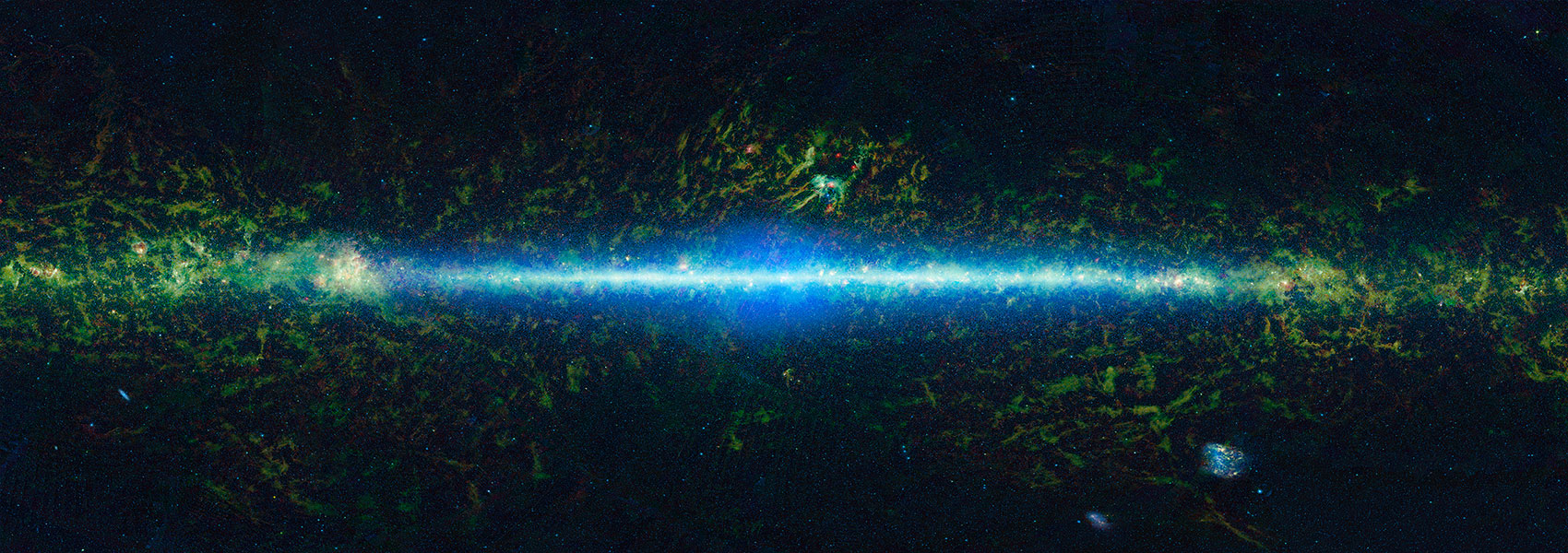IRAS and the Founding of IPAC
In 1985, IPAC was established on the campus of the California Institute of Technology as the "Infrared Processing & Analysis Center" for data from IRAS -- the Infrared Astronomical Satellite, joint project of the US, UK and the Netherlands. IPAC has since grown beyond its inaugural name - and is now known simply as "IPAC" - by building upon its experience in infrared data processing and analysis to provide a range of support for more than 20 missions and projects with observatories both in space and on the ground.
NED
In 1990, IPAC built the NASA/IPAC Extragalactic Database (NED), which quickly became an essential tool for extragalactic research. Today, NED is the world's largest database of cross-correlated multiwavelength data for extragalactic objects and services, which spans the entire observed spectrum, from gamma rays to radio frequencies.
IRSA
In the mid-90s, NASA designated IPAC as the US science support center for their infrared and sub-millimeter projects and missions. In response, IPAC formed the NASA/IPAC Infrared Science Archive (IRSA) in order to (1) curate and serve scientific data products, (2) enable optimal scientific exploration of these data sets by astronomers, and (3) support planning for, operation of, and data set generation from NASA missions. Since its founding, IRSA has evolved to become the data center for a large number of space missions, including ISO, MSX, Spitzer, WISE/NEOWISE, Herschel, Planck, as well as ground-based telescope facilities such as 2MASS, PTF and ZTF. IRSA continues to expand to better serve existing and future missions.
Science and Data Center Functions
Already well established as a hub for science data, IPAC continued to expand its expertise to provide multiple mission operations, as well as education and outreach services to NASA and the astronomical community.
IPAC serves as the administrative home of the NASA Exoplanet Science Institute. IPAC provides data and science center functions, and is a partner in several large scale, high-impact missions including the Nancy Grace Roman Space Telescope, Euclid, Herschel, Spitzer, Planck, WISE/NEOWISE, Keck, ISO, IRAS, Rubin, and many more.
The Future
IPAC continues to seek out missions and projects where the unique range of expertise developed over three decades can be leveraged to optimally support discovery and the advancement of the scientific frontier. IPAC staff are currently involved in future large and high-priority missions and in mission studies to prepare for follow-on to the US 2020 Astronomy and Astrophysics Decadal Survey. This includes the Ultraviolet Explorer (UVEX) which will undertake a synoptic survey of the entire sky in the near-UV and far-UV.



